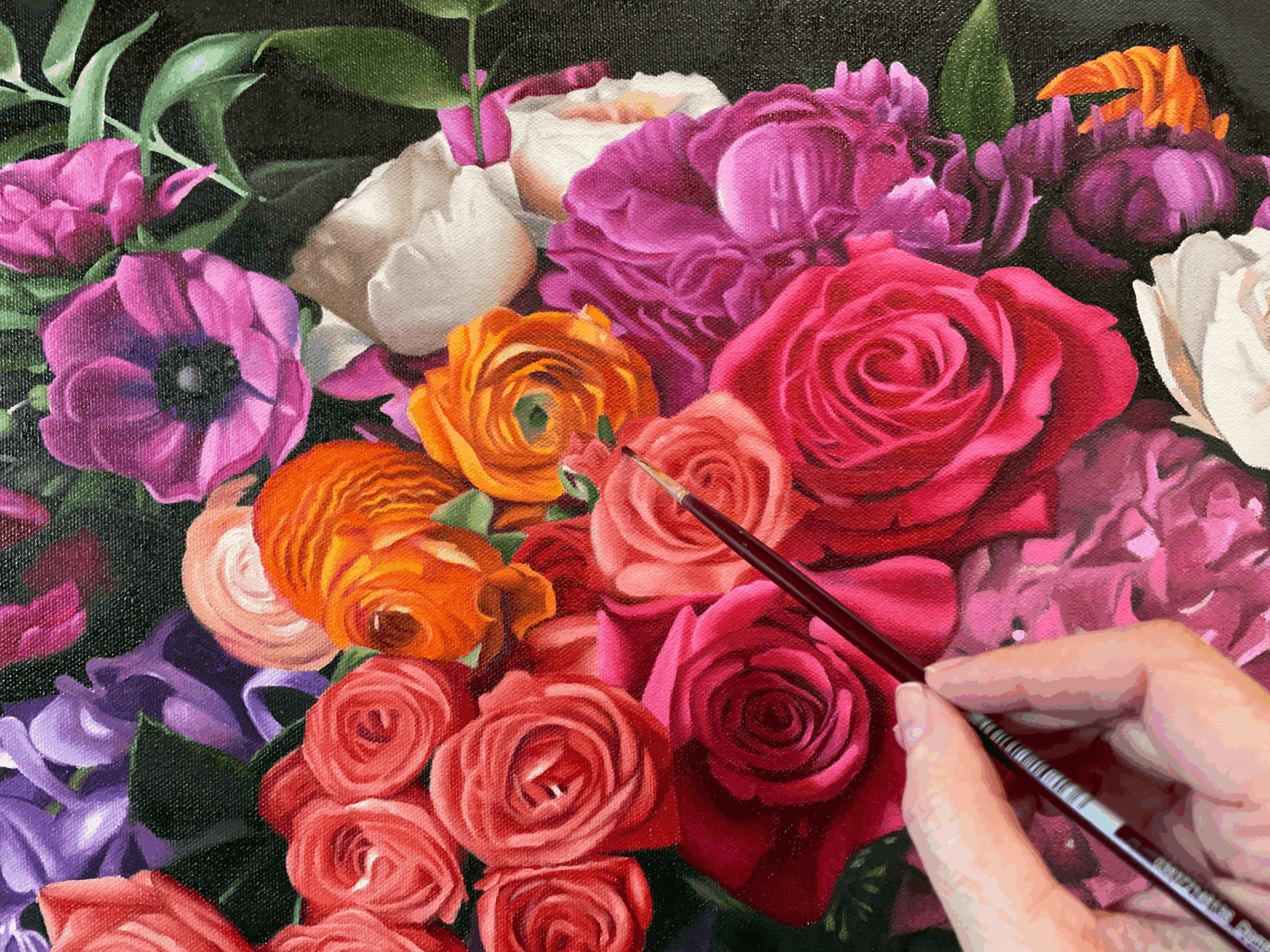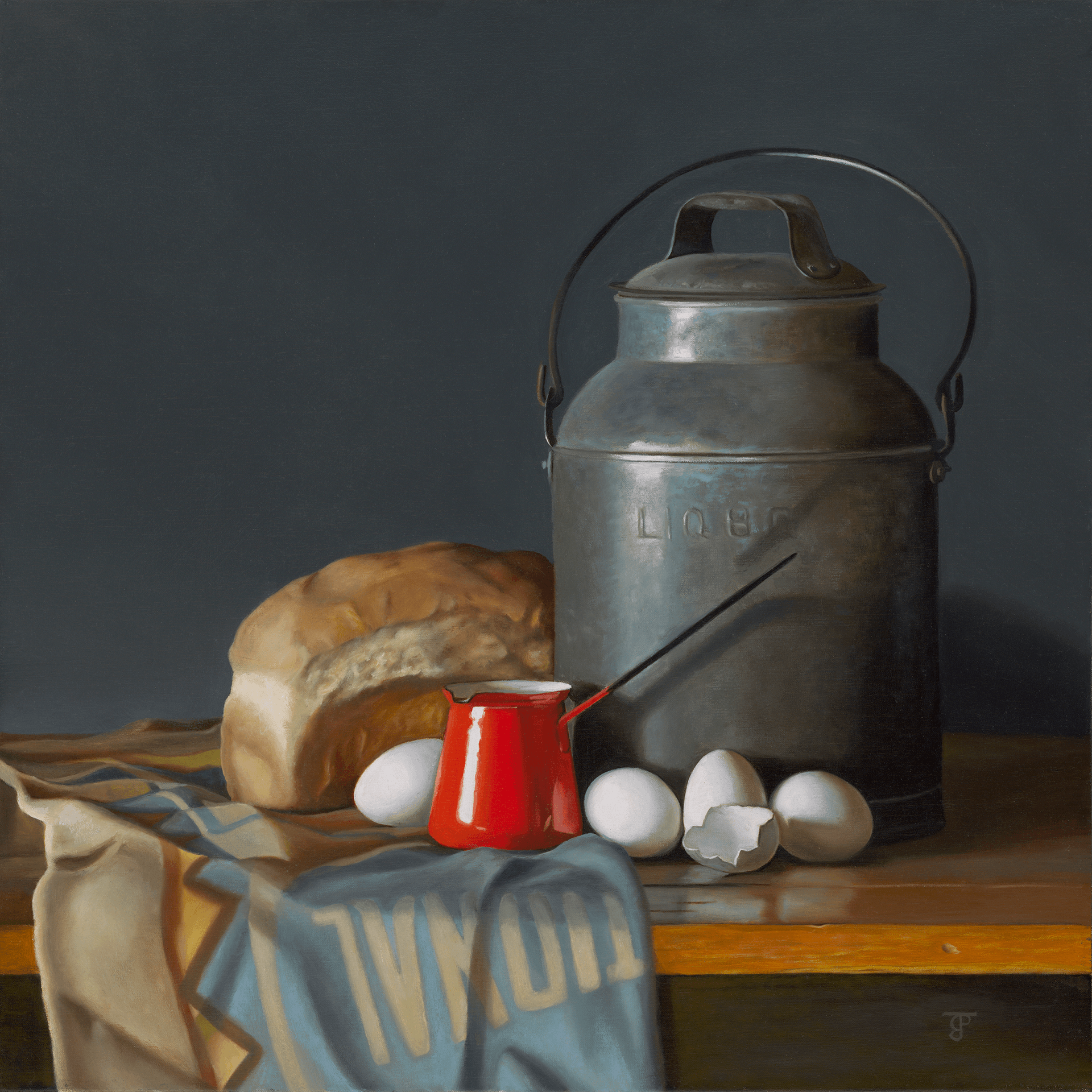We’re excited to introduce you to the always interesting and insightful Dyan Padgett. We hope you’ll enjoy our conversation with Dyan below.
Dyan, thanks for joining us, excited to have you contributing your stories and insights. Can you talk to us about how you learned to do what you do?
I was a Fine Arts major in college. Although I studied art in college, it did not fully prepare me for a career in the arts. My undergraduate program was an exploration of the arts – slowly guiding me to the conclusion that I wanted to become a painter. However, because I took classes across a wide range of mediums, it did not allow the time or space to hone my skills as a painter. Nor did it prepare me for the unique financial situation of being an artist. I basically walked away with a degree and the knowledge that I wanted to paint.
Years later, I attended an Atelier to focus on learning the craft of painting. It was here that I worked on deepening my knowledge and building a solid skill-set. A mentor once advised me, “teach the world to beat a path to your door” and I felt the best way to do that was by developing a strong set of core competencies. Quality work is always a great differentiator. While expression is vital, you must also have the skills and understanding to successfully execute and communicate expression.
After five years of Atelier study, I set up my own art studio. The initial years were tough. I was still exploring who I was as a painter and had yet to develop a real identity as an artist. And sales were lean. I lacked a business background making the less fun aspects of an art career, like marketing and financial planning, cumbersome.
One of the many surprises I encountered is just how hard it is to be an artist AND run a business. I wish more artists were open and honest about this. The lack of business training in many art programs is very real and unfortunate, often ending careers before they get started. My business skills were developed slowly, by trial and error. I sought help from others. I reached out to successful artists and offered to buy them coffee if I could ask questions (a great source of information). I also took classes, both online and in person. Being more in control of the business of my art, allowed me greater freedom (and less stress) in art making.

Great, appreciate you sharing that with us. Before we ask you to share more of your insights, can you take a moment to introduce yourself and how you got to where you are today to our readers.
I have always been an artist to my core. Childhood friends will tell you stories of me giving them signed drawings in kindergarten. My first models were my cats, rendered in pencil. I was once admonished by a math teacher for turning all the “0” into faces and my most prized childhood possession was a crayon caddie that neatly held a pack of 64.
Adults will tell you that there comes a time in life when we must put away childish things. But I never did. I held on tight to my childhood dream of becoming an artist.
I am a classically trained oil painter specializing in still life and florals. I love transforming everyday objects into things of beauty and wonderment. I find great joy in creating floral paintings. Flowers vividly connect us to time and place like no other object can. They remind of us of special people and mark important events. They are also lovely (and smell great while I paint them).
I have a Bachelors of Art from DePauw University and completed five years of rigorous study at The Atelier, a program dedicated solely to the training of painters. I have continued my education through workshops with renown painters including Michael Angel, Katie Whipple and Doug Flynt.
My art practice focuses on skills learned and perfected through the age-old atelier method – artistic instruction passed from master painter / instructor to student, melding academic draftsmanship with Impressionistic color. Heavily influenced by my time living in the Netherlands (and studying Dutch masters such as Vermeer), natural light and vibrant color are core themes of my work.
I create heirloom quality oil paintings, working closely with collectors to create a piece they will cherish for a lifetime. I own and operate Dyan J. Padgett Fine Art in the Northrup King Building in Minneapolis. My work is found in private collections throughout the US and

What can society do to ensure an environment that’s helpful to artists and creatives?
There are many barriers to becoming an artist. They include:
-financial instability
-lack of access to healthcare
-lack of business training
-discrimination /lack of representation
-lack of affordable housing/work space
-high cost of material
On a large scale, supporting artists means thoughtfully addressing these barriers and coming up with viable solutions. Affordable work /live spaces, grants, representation of work created my minority communities and women in the public domain, and business training workshops are a great start.
On a smaller scale, supporting artists means buying original art directly from artists instead of purchasing mass produced art. It means keeping arts in our schools and public spaces. It means paying a fair price for artwork.

What do you find most rewarding about being a creative?
For me, the most rewarding aspect of being an artist is getting to live an authentic life. I greet each day according to my own values, spirit and goals. It means the freedom to wake up each day and choose beauty in a world that can often be ugly.
My personal mantra has always been “leave the world a better place than you found it” and I do that each day through art.
Contact Info:
- Website: https://www.dyanpadgett.com
- Instagram: https://www.instagram.com/dyanpadgettfineart
- Facebook: https://www.facebook.com/DyanJPadgettFineArt/
- Linkedin: https://www.linkedin.com/in/dyan-padgett-347bb1b/?lipi=urn%3Ali%3Apage%3Ad_flagship3_job_home%3BXcasBW2AR7mkjR27dYOt6Q%3D%3D
- Youtube: Dyan Padgett






